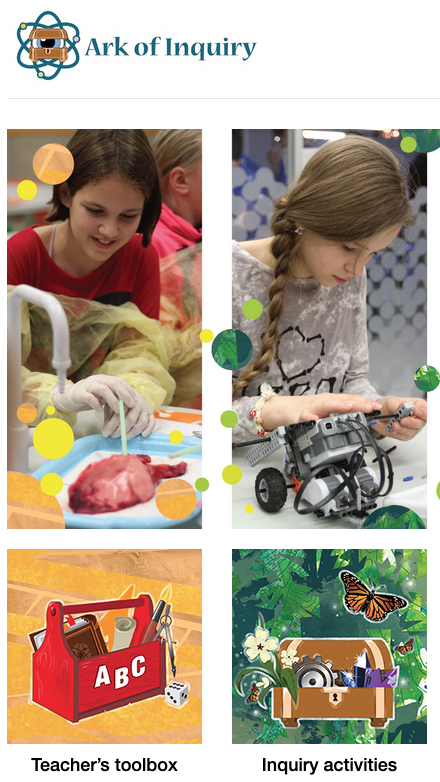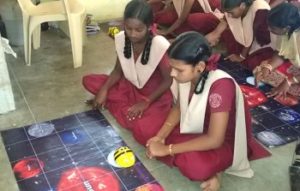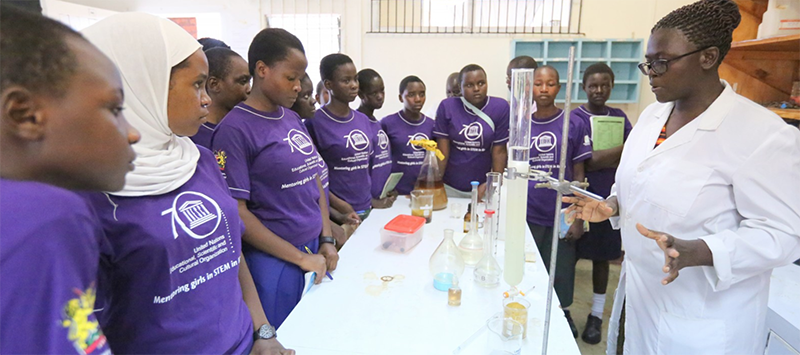In other articles we have talked about the worrying figures for women’s participation in the world of science and technology. A situation in which prejudices (including those of women and girls themselves in their capacities) played an important role. We also talked about the urgent need to take measures, starting with education, to break the vicious circle that condemns half of the world’s population to remain outside the construction and development of the most important advances in society. What is being done to level the field? In this post we have mapped some interesting initiatives to encourage girls’ and young women’s interest and participation in STEM subjects, especially in vulnerable environments.
PROGRAMMES TO STRENGTHEN TEACHING CAPACITY
TeachHer: teaching how to teach science
The TeachHer initiative is a public-private alliance created by the Permanent Delegation of the United States to UNESCO. Its aim is to help close the gender gap in STEM curricula and careers by focusing on teacher training. Thus, using UNESCO’s network of training institutes, the initiative created a corps of gender-sensitive teachers, administrators and political leaders to inspire girls and equip them with the necessary means to become leaders in these fields. During its pilot phase, TeachHer trained more than 300 teachers in Africa and Central America and organised four regional workshops, equipping teachers with the skills needed to deliver innovative and practical teaching to young women.
Ark of Inquiry: the teacher’s checklist

Screenshot from the Ark of Inquiry website of the European Commission and UNESCO.
How to engage girls in science? The European Commission and UNESCO believe that this can be done through the direct practice of the scientific method: reading scientific publications; formulating problems, research questions or hypotheses; planning and carrying out observations or experiments, analysing the data collected and drawing conclusions or generalisations. They are called “New Science Classrooms” and aim to provide teachers and students with various pedagogical scenarios that serve to empower girls in the science classroom, using higher-order challenges, scientific practices and tasks through reflective learning. The project provides teachers with guidance and experiences, as well as a step-by-step checklist.
Unesco’s training module: an instruction manual
A manual, developed by Unesco, to guide and counsel trainers, career counsellors, principals and teachers on science. It aims to help countries, through their teachers, to promote a positive image of women in science, provide girls with clear information about scientific careers, counteract gender stereotypes and ensure that teachers and career counsellors have the necessary tools to ensure that all girls have access to appropriate science education, free of bias and stereotypes.
PROGRAMMES AIMED AT ERADICATING STEREOTYPES ABOUT WOMEN IN SCIENCE
STEM Girls Can: Mexico’s network of women mentors

Screenshot of the Girls STEM Can website.
Inspirational talks with nuclear women scientists, talks with women scientists from the Mexican Space Agency, astronomy workshops, Mars mission simulations, robotics workshops. This initiative, promoted by the OECD, aims to introduce secondary school girls to STEM fields with educational opportunities outside the classroom, supported by a network of women mentors and graphic material. Together with Unesco, the Ministry of Public Education and the Mexican Academy of Engineering are working together to organise conferences, digital content, workshops and meetings with women mentors to develop the interest of young Mexican girls in STEM fields, thus generating a positive change so that more and more Mexican girls choose to pursue higher education in these fields.
India’s Rocket Women: a rocket of possibilities
What would the world be like if all girls had the opportunity to reach their potential and change the world through science? Rocket Women wants to give women scientists around the world a platform to spread their advice and ensure their voices are heard. With their stories of real women who have succeeded in these disciplines, they want young women and girls around the world to know that they can be astronauts, scientists, engineers or whatever they want to be. India’s Rocket Women is organised by the Indian Space Research Agency and contributes through its activities to breaking down barriers and prejudices through mentors and role models.
STEM is for Girls: motivational talks and teacher training
In Peru, this initiative has effectively reduced gender stereotypes among boys and girls between 14 and 16 years of age (En Órbita, Impact Evaluation). How? Organising motivational talks for 4th and 5th year secondary school pupils, and training teachers with workshops and manuals and publishing knowledge products related to the subject.
ACTIVE PARTICIPATION PROGRAMMES
Science, Technology and Mathematics Education Clinics (STME)
There are 855 girls in secondary school in the Jasikan district of Ghana. Of these 855, there are only 29 girls studying pure science. To increase girls’ participation in STEM-related courses in secondary schools and higher levels of education, UNESCO Accra office and its partners are organising “STEM Clinics” in selected districts of the country. These clinics are held quarterly to raise awareness among girls about the various STEM-related careers they can pursue. Here, girls have a unique opportunity to interact with young women scientists and learn about the many opportunities offered by the study of these subjects.
Indian Girls Code

Photo: Indian Girs Code website.
This initiative provides coding and robotics programmes for underprivileged girls in India. It inspires girls to be innovators in the field of computer science and technology and helps them learn to code and innovate by creating applications to solve real-world problems.
STEM Camps in Kenya
Since 2014, the UNESCO Nairobi Office, together with the Government of Kenya, the National Commission for Science, Technology and Innovation and the University of Nairobi, have been organizing annual Science Camps of Excellence for Girls’ Orientation in Science, Technology, Engineering and Mathematics (STEM). These week-long camps include career choice discussions, life skills tutorials, exchange of experiences with female STEM university students, science experiments and industry visits. The programme also trains Kenyan STEM teachers in gender-sensitive teaching. Following the arrival of COVID-19, the programme has been adapted to the new restrictions and school closures.
Girls in Technology
This Costa Rican programme has two main objectives: to develop technical skills in programming, robotics and mathematics in participants aged between 4 and 12, and to develop social skills that strengthen their leadership, self-determination, teamwork and permanence in the education system. Girls and teenagers receive two two-hour lessons per week, in the case of girls aged 4 to 6 years and three hours for the group aged 7 to 12 years, where they will work on the development of their technological skills and playful and recreational activities for motivation and female empowerment will be carried out. They will also visit companies and universities specialising in this area.
WHAT DO THESE PROGRAMMES TELL US?
These programmes aim to address some of the biggest challenges that keep girls, women and young women away from science and technology careers. What are these challenges? What characteristics should these programmes and initiatives have?
- Experimentation: STEM subjects are deeply experimental. Girls should try, experiment, get dirty, have fun… all this will awaken their curiosity and interest in these subjects. STEM programmes and initiatives for girls should provide different STEM-related experiences to girls and young women.
- Awareness: stereotypes and (sometimes unintentional) biases play a major role in steering girls away from STEM subjects. Often, these prejudices come from teachers and families themselves. It is therefore essential to train teachers not only to be able to provide gender-neutral training but also to equip them with pedagogical techniques and practices to encourage girls to take up these disciplines.
- Information: there is a lack of knowledge about the many fields that can be studied and what career developments and opportunities these entail. Therefore, these programmes should have a strong informational component explaining what it means to work in STEM and what skills are needed to work in these fields.
- Mentoring: the lack of role models is also one of the most important elements preventing girls’ participation in STEM disciplines. Because if we only see men in certain professions, it is inevitable that, for some reason, girls cannot do them. That is why the visibility of women scientists, engineers, mathematicians, astronauts… from the present and the past, is one of the fundamental axes of any programme that aims to encourage greater participation of women in STEM.
It took millions of years to discover that women also hunted mammoths. Hopefully it won’t take millions more to realise that they can also be the best scientists and technologists.






